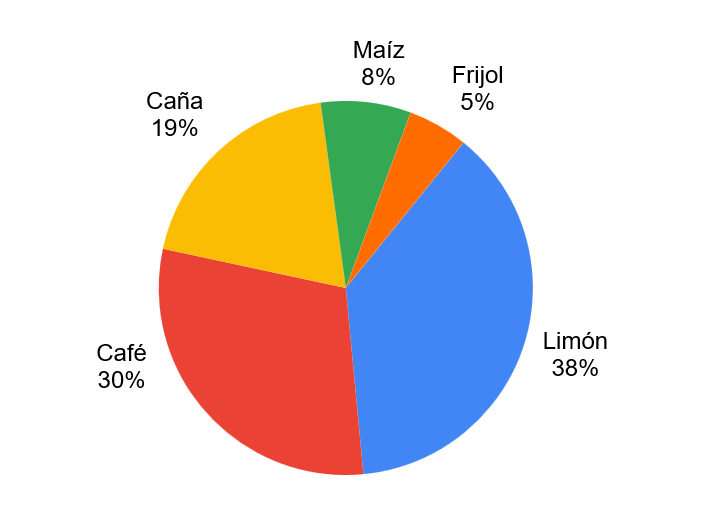Agricultural activities and use of glyphosate in the ejido of Bella Esperanza, Coatepec, Veracruz
DOI:
https://doi.org/10.29312/remexca.v15i2.3204Keywords:
Citrus latifolia Tanaka, glyphosate, pesticide, weedsAbstract
Glyphosate is a broad-spectrum herbicide that has been applied to agricultural fields in more than 200 countries for 40 years. Due to recent studies that demonstrated its relationship as a carcinogen, a worldwide debate has opened about its use and prohibition. Mexico has joined the movement to ban its use in the decree issued in December 2020. Due to its constant application, residual glyphosate impacts different environmental compartments, including the soil. Therefore, the objective was to identify the agricultural practices and weed management used in the ejido of Bella Esperanza, Coatepec, Veracruz, as part of the characterization of the sampling site for the research project on the bioremediation of glyphosate with endogenous microorganisms. Through a field approach, surveys were carried out with producers in the area, where the results showed that 54% use glyphosate as their primary weed control. They do not use any protective equipment either and consider glyphosate a product harmless to the environment. In the same way, the result of this study observed that the ejido of Bella Esperanza is a suitable sampling area for studying microorganisms with possible applications in bioremediation.
Downloads
References
CONACYT. 2022. Consejo Nacional de Ciencia y Tecnología. Manejo ecológico integral de arvenses en México, sí hay alternativas al glifosato. Gaceta informativa núm. 9.
EPA. 2019. Enviromental Agency Protection. Glyphosate update. pesticide program dialogue committee meeting. NEPIS.1-2 pp.
IARC. 2017. International Agency Research for Cancer. IARC monographs on the evaluation of carcinogenic risks to humans: some organophosphate insecticides and herbicides. Lyon. World Health Organization. WHO Press. 112 p.
SADER. 2019. Secretaría de Agricultura y Desarrollo Rural. Servicio Nacional de Sanidad, Inocuidad y Calidad Agroalimentaria (SENASICA). Manual para el buen uso y manejo de plaguicidas en campo. 1rª. Ed. SADER. México, DF. 80 p.
SEGOB. 2020. Secretaría de Gobernación. Decreto para sustituir gradualmente el uso del glifosato y derivados en México. Diario Oficial de la Federación (DOF). México, DF. DOF:31/12/2020.
SEMARNAT. 2019. Secretaría de Medio Ambiente y Recursos Naturales. Niega Semarnat importación de mil toneladas de glifosato, bajo el principio precautorio para la prevención de riesgos. México, DF.
SIAP. 2021. Servicio de Información Agroalimentaria y Pesquería. Panorama Agroalimentario, 2021. Ed. 2021. México, DF.
Valavanidis, A. 2018. Glyphosate, the Most Widely Used Herbicide. Health and safety issues. Why scientists differ in their evaluation of its adverse health effects. Scientific Reviews. 11-40 pp.

Published
How to Cite
Issue
Section
License
Copyright (c) 2024 Revista Mexicana de Ciencias Agrícolas

This work is licensed under a Creative Commons Attribution-NonCommercial 4.0 International License.
The authors who publish in Revista Mexicana de Ciencias Agrícolas accept the following conditions:
In accordance with copyright laws, Revista Mexicana de Ciencias Agrícolas recognizes and respects the authors’ moral right and ownership of property rights which will be transferred to the journal for dissemination in open access. Invariably, all the authors have to sign a letter of transfer of property rights and of originality of the article to Instituto Nacional de Investigaciones Forestales, Agrícolas y Pecuarias (INIFAP) [National Institute of Forestry, Agricultural and Livestock Research]. The author(s) must pay a fee for the reception of articles before proceeding to editorial review.
All the texts published by Revista Mexicana de Ciencias Agrícolas —with no exception— are distributed under a Creative Commons License Attribution-NonCommercial 4.0 International (CC BY-NC 4.0), which allows third parties to use the publication as long as the work’s authorship and its first publication in this journal are mentioned.
The author(s) can enter into independent and additional contractual agreements for the nonexclusive distribution of the version of the article published in Revista Mexicana de Ciencias Agrícolas (for example include it into an institutional repository or publish it in a book) as long as it is clearly and explicitly indicated that the work was published for the first time in Revista Mexicana de Ciencias Agrícolas.
For all the above, the authors shall send the Letter-transfer of Property Rights for the first publication duly filled in and signed by the author(s). This form must be sent as a PDF file to: revista_atm@yahoo.com.mx; cienciasagricola@inifap.gob.mx; remexca2017@gmail.
This work is licensed under a Creative Commons Attribution-Noncommercial 4.0 International license.


